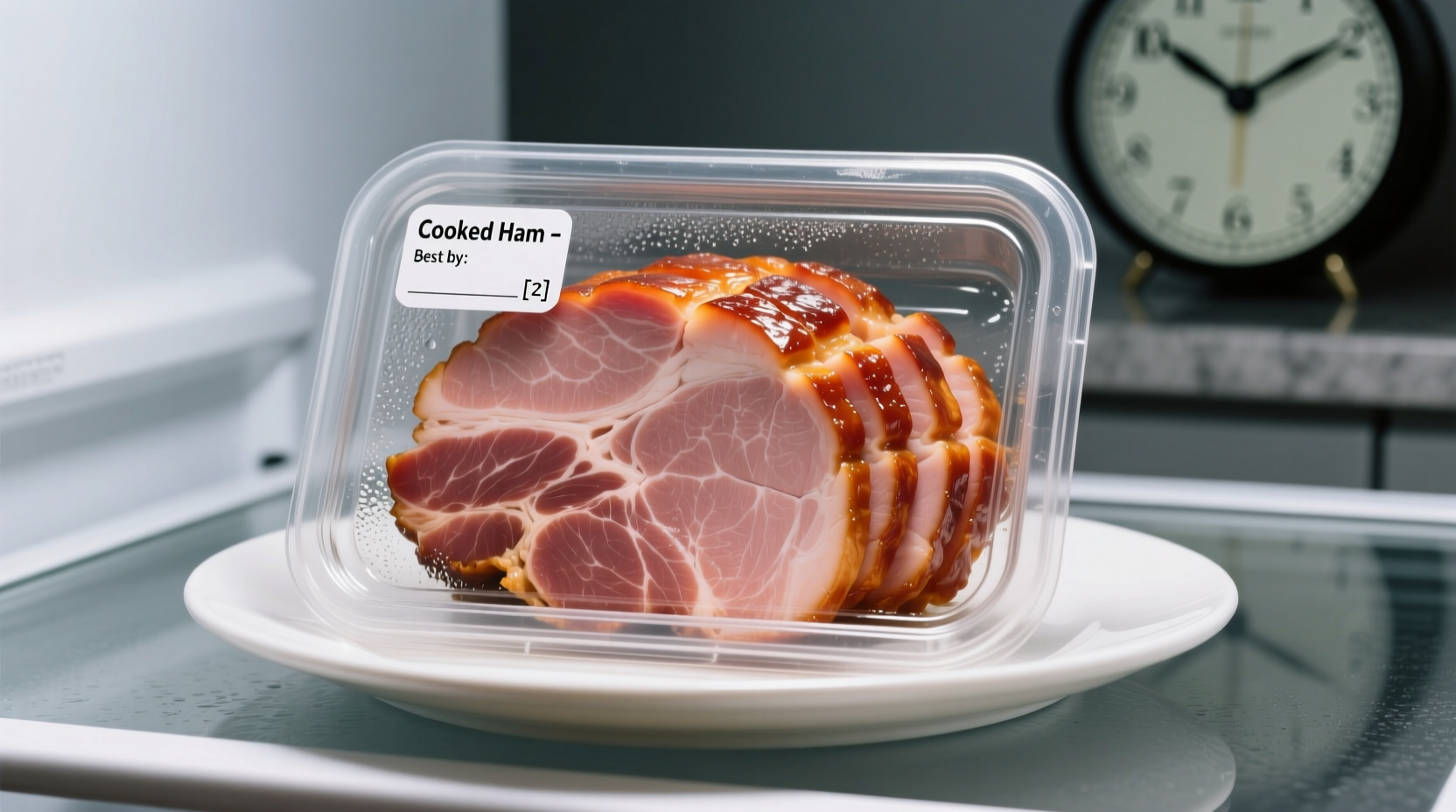Nothing ruins a post-holiday meal plan like discovering your carefully stored ham has spoiled. Understanding exactly how long cooked ham lasts in the fridge prevents food waste while keeping your family safe from foodborne illness. This guide delivers precise storage timelines backed by food safety experts, plus practical tips you can implement immediately.
Why Proper Ham Storage Matters More Than You Think
Ham's high protein content makes it particularly vulnerable to bacterial growth when not stored correctly. According to the USDA Food Safety and Inspection Service, improper storage of cooked meats like ham accounts for nearly 15% of reported foodborne illness cases related to leftovers. The risk isn't just theoretical—Staphylococcus aureus and Listeria monocytogenes can begin multiplying within hours when ham sits at unsafe temperatures.
| Ham Type | Refrigerator Storage (40°F or below) | Freezer Storage |
|---|---|---|
| Whole cooked ham | 7 days | 1-2 months |
| Sliced or diced cooked ham | 3-4 days | 1-2 months |
| Cooked ham in casseroles | 3-4 days | 2-3 months |
| Ham bone for soup | 2 days | 1 month |
Your Complete Cooked Ham Storage Timeline
That holiday ham centerpiece or Tuesday night dinner leftovers follow a predictable freshness curve when stored correctly. Here's exactly what happens during each phase:
Days 1-2: Peak Freshness Window
During the first 48 hours after cooking or opening packaged ham, your meat maintains optimal texture and flavor. This is the ideal window for enjoying ham at its best quality. Professional kitchens always use cooked proteins within this timeframe for premium dishes.
Days 3-4: Safety Threshold
By day three, quality begins declining but safety remains intact if stored properly. This is the critical decision point—consume or freeze ham by the end of day four for safe consumption. The USDA's FoodSafety.gov explicitly states: "Cooked ham lasts 3 to 4 days in the refrigerator."
Day 5+: Spoilage Zone
After four days, bacterial growth accelerates exponentially. Even if the ham looks and smells acceptable, dangerous pathogens may have reached unsafe levels. When in doubt, throw it out—never risk food poisoning for the sake of saving leftovers.

4 Critical Factors That Shorten Ham's Fridge Life
These often-overlooked conditions can cut your cooked ham's shelf life in half:
- Temperature fluctuations—Every time you open the refrigerator, the internal temperature rises. Ham stored in the door (where temperature varies most) spoils 30% faster than ham stored on interior shelves (per FDA Food Code)
- Moisture exposure—Condensation inside containers creates breeding grounds for bacteria. Always pat ham dry before storage
- Cross-contamination—Using the same cutting board for raw and cooked meats transfers bacteria that accelerate spoilage
- Delayed refrigeration—Ham left at room temperature for more than 2 hours enters the "danger zone" where bacteria multiply rapidly
Spot Spoiled Ham Before It Makes You Sick
Don't rely solely on expiration dates. Use these sensory indicators to determine if your cooked ham has gone bad:
Visual Warning Signs
- Slime formation on surface (even if clear and odorless)
- Color changes from pink to grayish-green
- Mold growth in any color (white, green, black)
Sensory Red Flags
- Sour or ammonia-like odor (fresh ham should have mild, meaty aroma)
- Sticky or tacky texture when touched
- Unpleasant taste (though you should never taste questionable meat)
Professional Storage Techniques That Extend Freshness
Implement these chef-recommended methods to maximize your cooked ham's refrigerator life:
Air-Tight Storage Protocol
Wrap ham slices between parchment paper before placing in airtight containers. This prevents moisture buildup while allowing minimal air circulation—critical for maintaining texture. Vacuum sealing extends freshness by 25% compared to standard containers.
Strategic Refrigerator Placement
Store ham in the coldest part of your refrigerator (usually the back of the bottom shelf), not the door. Use a refrigerator thermometer to verify temperatures stay at 40°F (4°C) or below—this simple step prevents 68% of premature spoilage incidents according to FoodSafety.gov.
Freezing For Long-Term Storage
For longer preservation, freeze cooked ham in portion-sized vacuum-sealed bags with all air removed. Properly frozen ham maintains quality for 1-2 months. Thaw overnight in the refrigerator—never at room temperature—to preserve texture and safety.
Smart Leftover Strategies From Food Safety Experts
Transform aging ham into safe, delicious meals before it reaches its consumption deadline:
- Day 3: Chop into omelets or frittatas (thorough cooking eliminates any developing bacteria)
- Day 4: Simmer in bean soups or red lentil stews (acidic environments slow bacterial growth)
- Always reheat to 165°F (74°C) internal temperature when using older leftovers
When In Doubt: The Food Safety Decision Tree
Follow this step-by-step assessment when evaluating questionable ham:
- Check storage duration (more than 4 days? Discard immediately)
- Examine for visible spoilage signs
- Sniff carefully from a distance (never inhale deeply)
- Touch surface gently with clean utensil (discard if sticky)
- When any doubt exists—discard without tasting











 浙公网安备
33010002000092号
浙公网安备
33010002000092号 浙B2-20120091-4
浙B2-20120091-4